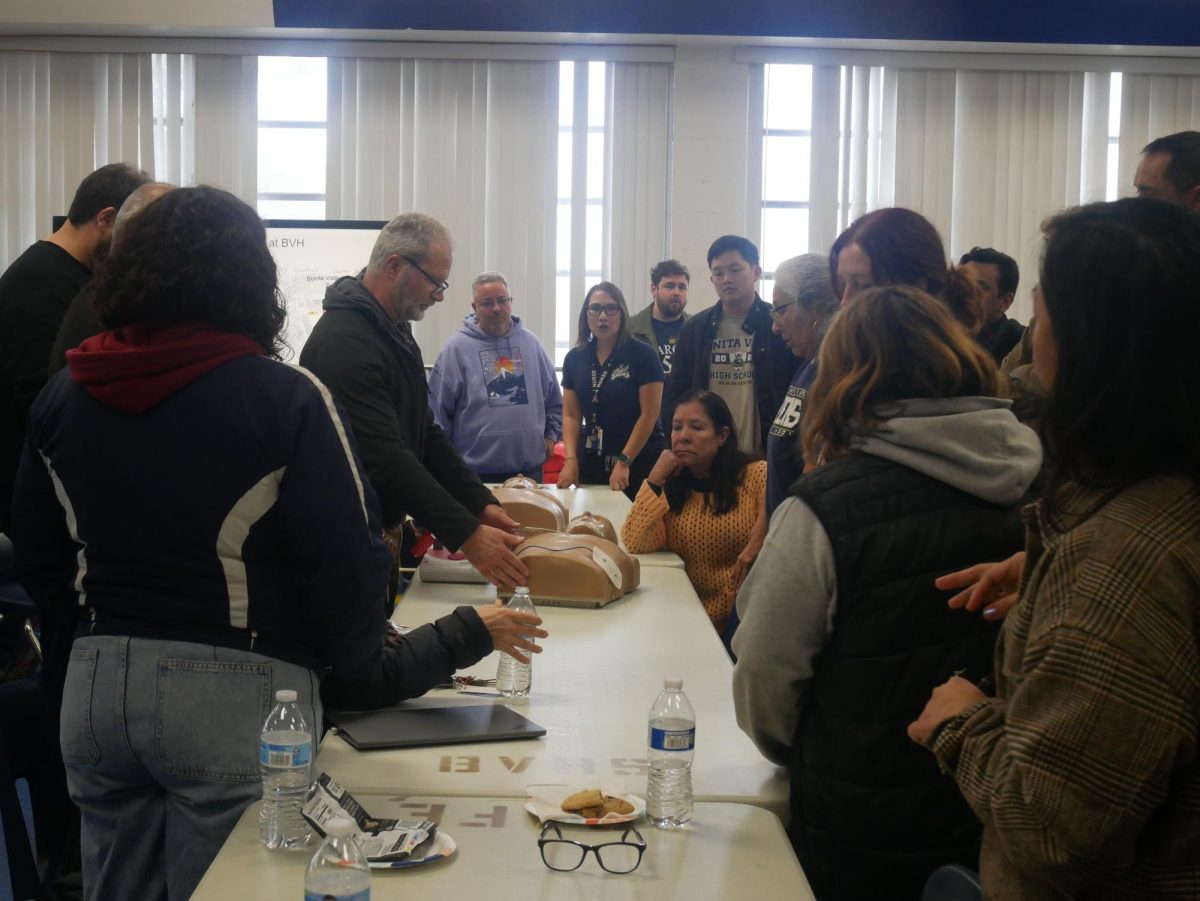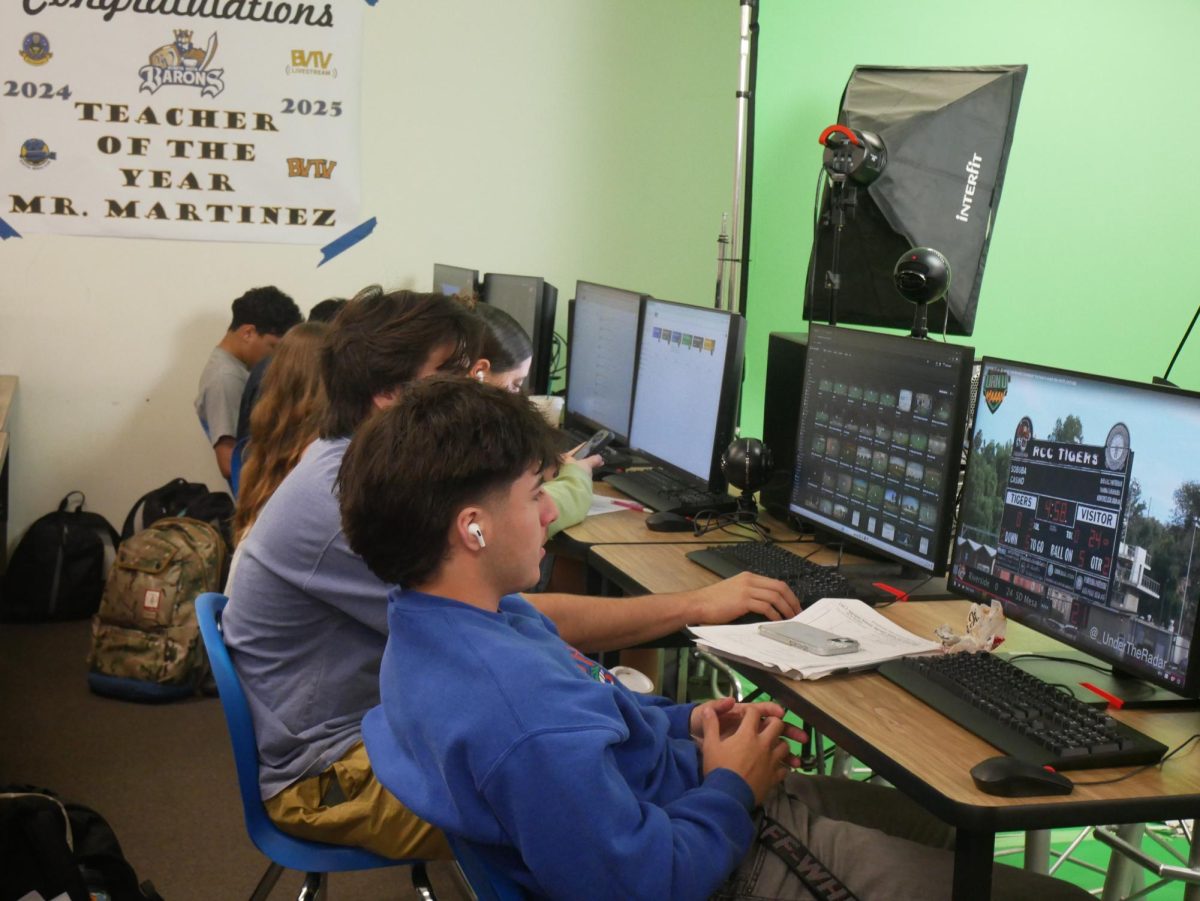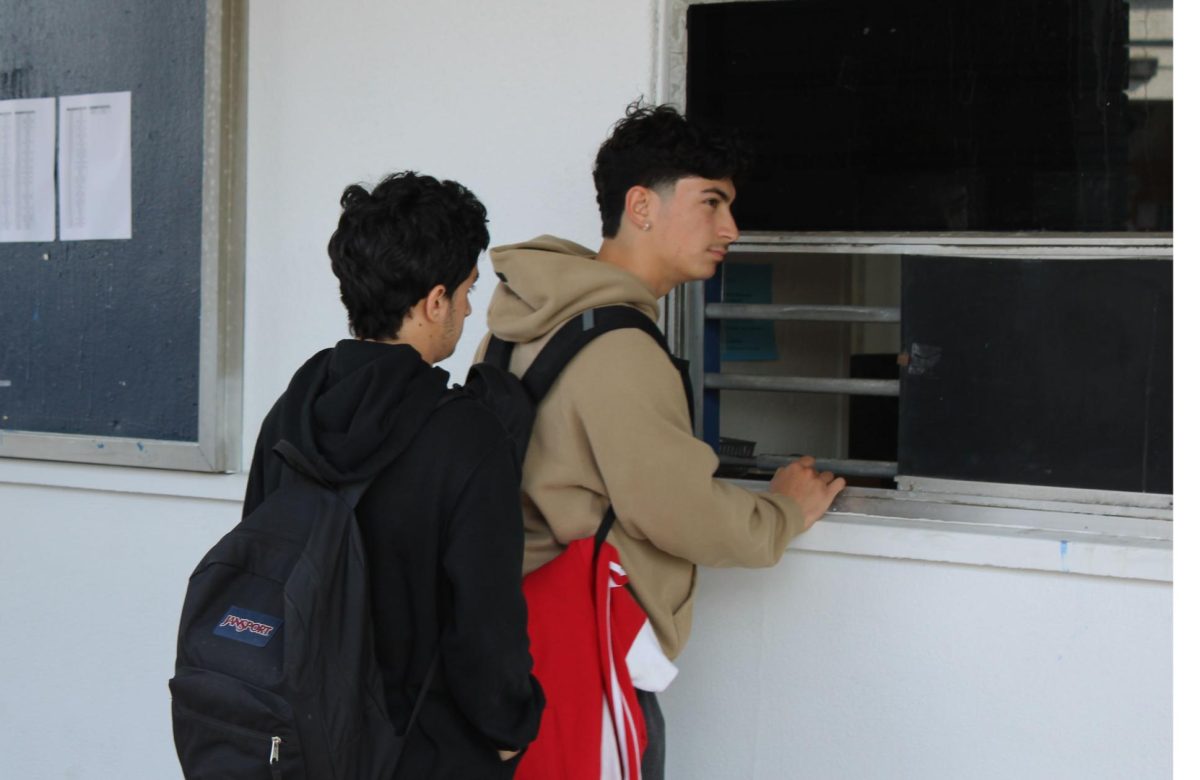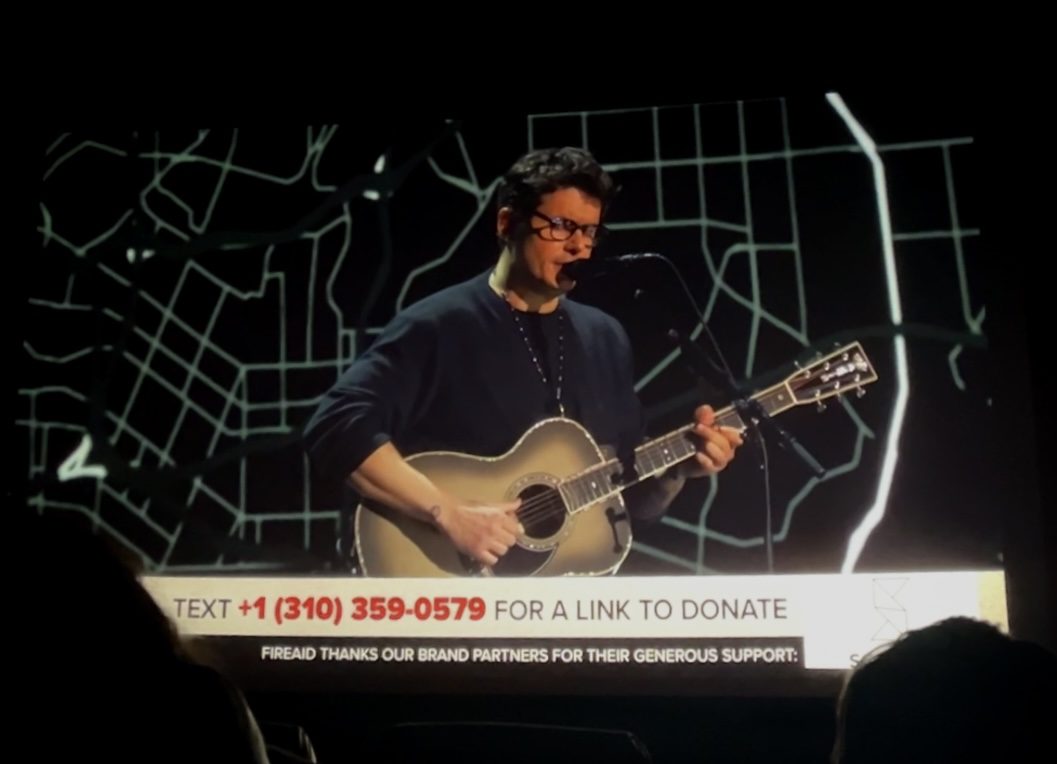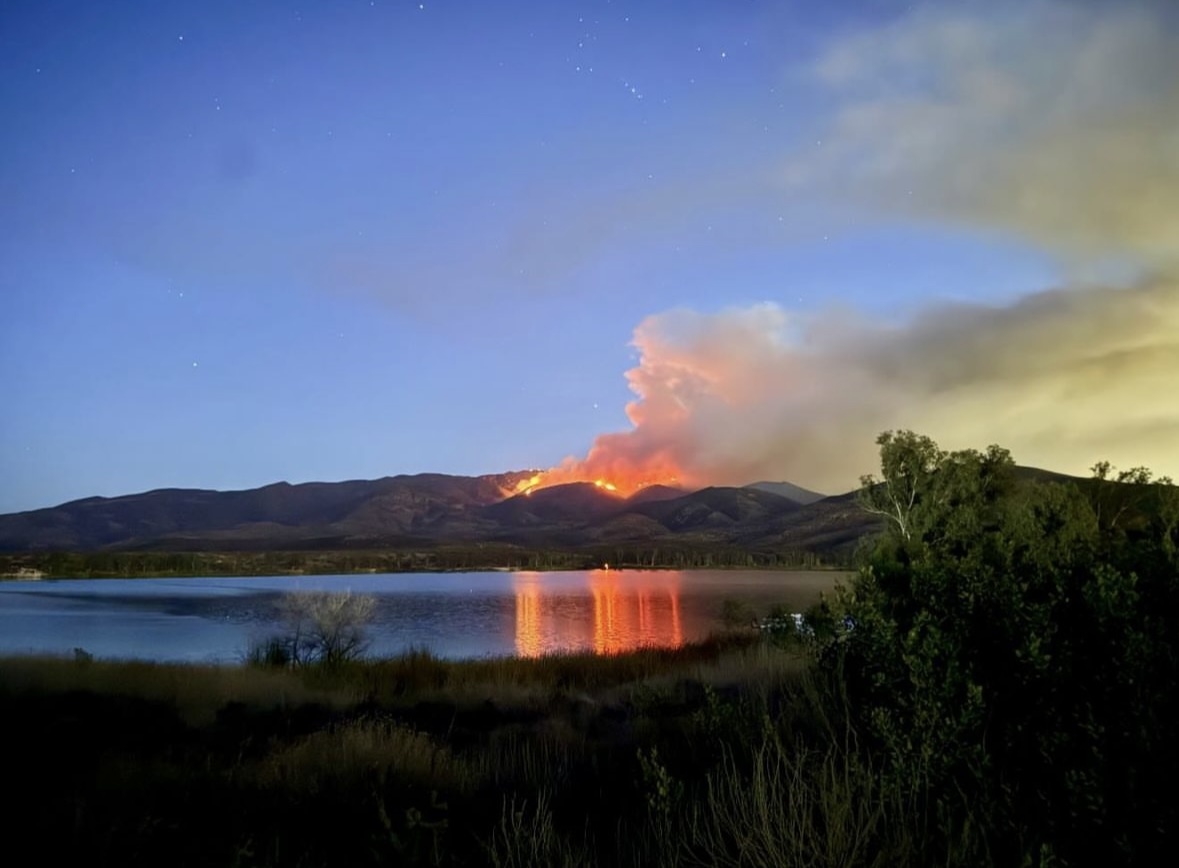On Feb. 7, BVH staff gathered in the cafeteria for a safety training meeting focusing on Cardiopulmonary Resuscitation (CPR), Automated External Defibrillator (AED) use and clear room drills. While this safety meeting was not an official certification course, it was an action towards ensuring staff members feel more comfortable in case of an emergency. Assistant Principal Tyler Arciaga led the meeting, supported by Sports Medicine students and nurses who assisted with CPR practicing using dummies and AED demonstrations. IB math A&A SL and IM2 math teacher Jessica Erlenheim speaks on why these types of meetings are so important.
“When you are in a high pressure situation like that, sometimes you might not know what to do. By just knowing the order of the steps like checking the pulse, calling 911 and starting CPR [helps],” Erlenheim said.
Erlenheim knows that every second counts and that it is crucial to be as efficient as possible. Reflecting on the value of time, IM2 and discrete math teacher Albert Cabrera expresses that time is of the essence and found one of the topics discussed in the meeting to be life-changing. Cabrera shares his biggest takeaway from the safety topics presented.
“I think that time matters. You have to jump in there fast, for every minute 10 percent is taken off of their life. The longer you take, the more likely they are not going to be able to survive,” Cabrera said.
According to the American Heart Association, the compression depth must be “at least two inches” in adults while avoiding anything “greater than 2.4 inches” and “1.5 inches in infants to 2 inches in children.” At this level of depth, hesitation is a common yet hazardous reaction in cardiac emergencies. Erlenheim explains her thoughts in a practical scenario.
“In a real-life scenario, you would probably hesitate, because you have to push so hard [on their chest], and you can break ribs or the sternum. So I was surprised by how strong you have to push, because it had been a while, you know, it is not something you do all of the time. I feel like you kind of forget how hard you really have to push on their chest,” Erlenheim said.
Although it may seem alarming, breaking ribs during CPR is a common occurrence. This transpires since chest compressions require lots of strength to keep the blood circulating. Sports Medicine teacher and Athletic Trainer Alexis Ramirez emphasizes the importance of not hesitating.
“You have to make sure that you are really pressing down on that chest and in real life, you are probably going to hear some ribs cracking, but that is okay. You would rather have broken ribs than someone die in front of you. You know that you are going deep enough if you’re hearing those ribs cracking,” Ramirez said.
Ramirez has her AED at all times in case of a cardiac emergency. Applying little force could cost a victim’s life, so it is important to be prepared for any situation. Cabrera shares his thoughts on how teachers can become more prepared for these situations on campus.
“It would be nice if we could make the training we went to into an official certification training. I think that would require having good equipment and would require the meeting to be four hours, rather than a one hour [training]. If they could’ve included that into the PD (professional development) itself then that would have been [nice],” Cabrera said.
Erlenheim also believes that teachers should pursue CPR certification, considering their work environment. With children in the classroom, she sees this as not only beneficial but a necessary component to teaching adolescents daily.
“I feel like [teachers should] at least go through some type of training. I think it would be beneficial to be CPR certified [as a teacher surrounded by kids], I don’t see why not,” Erlenheim said.
Arciaga agrees and encourages staff to take the next step by getting certified in CPR and first aid. Arciaga mentions that while he does not have the power to mandate this, he believes it could be a valuable initiative for both their own personal safety, and for the well-being of others.
“To mandate something is above my realm, that is something that would have to be negotiated through collective bargaining, but it is a worthy cause. It is something that could be used outside of school as well. It could happen to anybody, it could happen in a holiday gathering or whatever else. I think it would be a great idea. We encourage staff members to all get certified,” Arciaga said.

